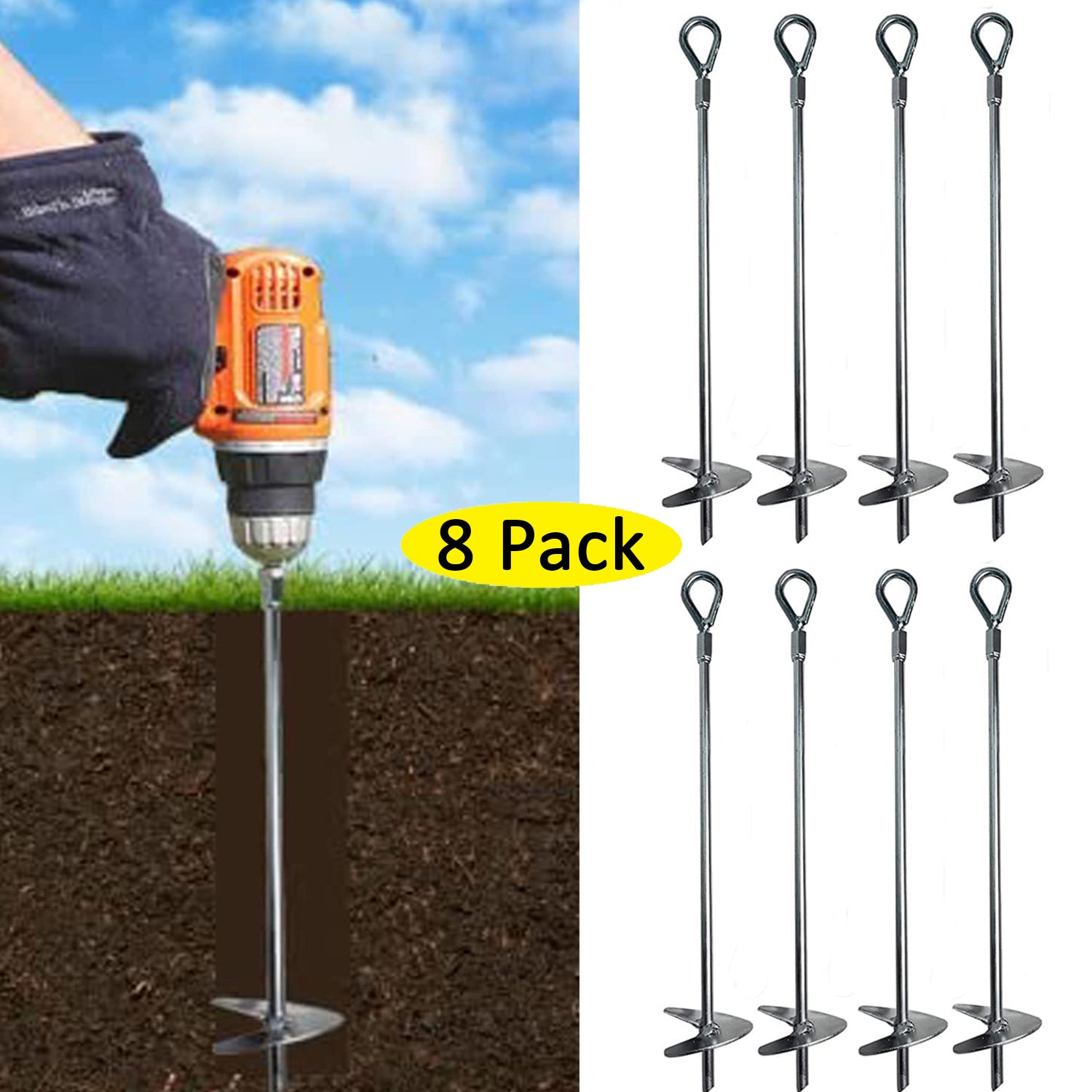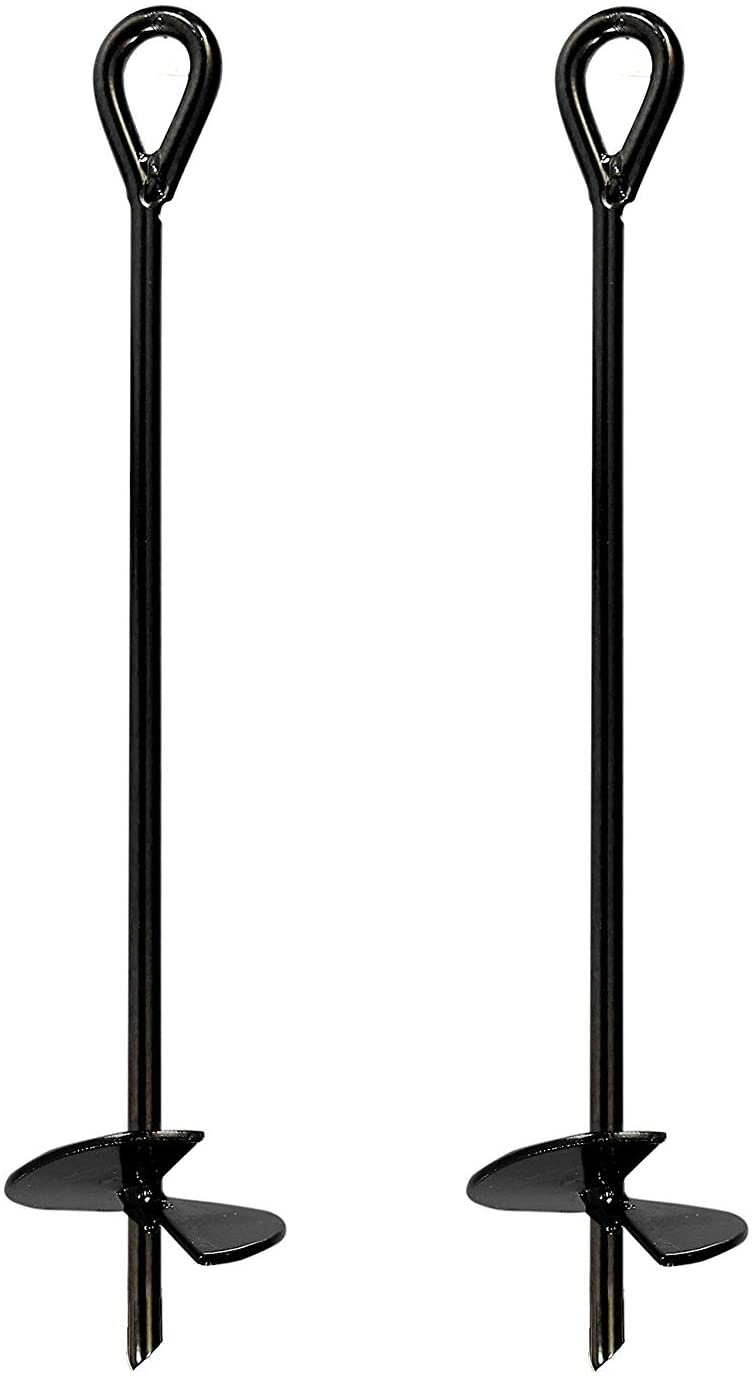Frequent Errors When Using a Ground Anchor for Security
Wiki Article
Check Out the Various Kinds of Ground Anchor for Your Following Task
When beginning on a building or landscaping task, recognizing the various types of ground supports readily available is critical to guaranteeing both security and durability (Ground Anchor). From auger anchors, which excel in diverse dirt conditions, to risk supports created for temporary installments, the options are countless. Furthermore, concrete and screw anchors present unique benefits in details circumstances, while deadman anchors are tailored for applications needing resistance to side pressures. The selection of a suitable support type can substantially affect the general success of your task, motivating more expedition into their particular benefits and applications.
Auger Anchors
Auger supports are a popular option in various building and landscaping tasks because of their one-of-a-kind design and efficient anchoring capacities. These anchors include a helical screw-like shaft that is driven right into the ground, enabling a secure and protected hold. The spiral layout facilitates very easy installation and takes full advantage of resistance versus side pressures, making auger anchors particularly effective in applications such as fencing, short-term structures, and erosion control.The setup process of auger supports is fairly straightforward. Auger anchors can be quickly gotten rid of and recycled, which includes to their cost-effectiveness and sustainability.
One of the substantial advantages of auger anchors is their capability to disperse tons evenly across the bordering soil, reducing the danger of soil disruption and reducing ecological impact. Additionally, they are much less susceptible to heaving or loosening with time compared to conventional securing methods. Auger anchors are a superb selection for tasks requiring trustworthy and durable anchoring solutions.

Risk Anchors
When it comes to securing frameworks in a range of outdoor applications, risk supports offer a trustworthy and uncomplicated solution. These supports are commonly constructed from resilient materials such as steel or aluminum, designed to stand up to ecological anxieties while supplying optimal stability. Their simple layout permits quick installment, making them an optimal option for temporary or long-term anchoring needs.Risk supports are specifically beneficial in safeguarding camping tents, canopies, and various other lightweight structures versus wind and weather. They operate by being driven right into the ground at an angle, developing a strong hold that resists pull-out pressures - Ground Anchor. The performance of stake anchors relies on several variables, including dirt type, wetness material, and the angle of installment
For added protection, several stake supports include attachment factors for bands or ropes, permitting for stress changes as essential. In applications such as landscaping or building and construction, they can successfully maintain tools or structures on irregular surface. In general, risk supports give a flexible and economical remedy for securing various exterior installations, making them a favored option for contractors and DIY enthusiasts alike.
Concrete Anchors
Concrete anchors offer a durable option for protecting structures to concrete surface areas, making certain security and safety and security in numerous applications. These anchors are important for projects varying from household buildings to massive industrial setups. They come in different kinds, consisting original site of expansion supports, adhesive anchors, and undercut anchors, each designed for details tons requirements and ecological problems.
Sticky anchors make use of high-strength epoxy or material to bond the anchor to the concrete, using superior load-bearing capabilities, particularly in fractured concrete circumstances. Undercut supports develop a special shape within the concrete, offering outstanding holding power, specifically in applications where tensile loads are prevalent.
When implemented properly, concrete supports considerably improve the architectural integrity of various jobs, making them essential in modern-day building techniques. Understanding the certain needs of your job will certainly help in picking the best type of concrete support for the task.
Screw Anchors

Screw supports are a flexible securing solution that can be efficiently employed in a range of applications where traditional concrete anchors may not be sufficient. These supports are composed of a helical layout that enables them to be conveniently driven right into the ground, making them perfect for use in dirt and various other substrates. Their one-of-a-kind framework offers superb holding power and resistance to pull-out forces, making them ideal for countless tasks, from landscape design to structural support.
One of the key benefits of screw anchors is their ease of installment. They need minimal tools and can usually be set up without the need for excavation, which conserves both time and labor costs. Furthermore, screw supports can be eliminated and reused, offering a sustainable remedy for momentary applications.
Screw supports are particularly valuable in locations where dirt conditions are testing, such as sandy or loose soils. Their capacity to be installed at differing depths enables customization based on certain project demands. In general, screw supports give a reliable and trustworthy securing approach, making them an excellent choice for designers and specialists seeking reliable solutions for their tasks.
Deadman Anchors
Deadman anchors work as a robust solution for stabilizing frameworks in tough problems, specifically where conventional anchoring methods may drop brief. These anchors are composed of large, hefty things hidden underground, which develop resistance against side pressures. The layout usually includes a horizontal element, such as a block of concrete or a steel plate, hidden in the dirt, to which straps or cables are attached.The efficiency of deadman anchors hinges on their capability to distribute lots over a bigger area, reducing the danger of failure in unstable dirt problems. They are especially advantageous in applications such as keeping wall surfaces, short-term frameworks, and incline stablizing, where soil movement can endanger the integrity of the structure.
Installment of deadman anchors calls for cautious planning to guarantee they check that are put at the correct depth and positioning, optimizing their load-bearing capability. While they might need click reference even more labor and product than lightweight supports, their dependability in damaging problems makes them important for long-lasting projects. Deadman anchors are functional and can be adapted to various applications, making them a go-to choice for designers dealing with one-of-a-kind obstacles in their tasks.
Final Thought
Auger supports excel in diverse dirt conditions, while stake supports match temporary applications. For concrete surface areas, expansion and sticky supports offer trusted choices, and screw anchors supply adaptability in challenging terrains.Additionally, concrete and screw supports existing one-of-a-kind benefits in particular situations, while deadman supports are tailored for applications requiring resistance to lateral forces - Ground Anchor.Auger anchors are a prominent selection in various building and landscaping tasks due to their special layout and efficient anchoring capabilities. They come in various types, including growth anchors, sticky anchors, and undercut anchors, each created for particular load requirements and ecological problems
Sticky anchors make use of high-strength epoxy or material to bond the anchor to the concrete, offering premium load-bearing capabilities, specifically in split concrete circumstances. On the whole, screw supports provide a effective and reputable anchoring approach, making them an excellent selection for engineers and service providers looking for efficient remedies for their projects.
Report this wiki page